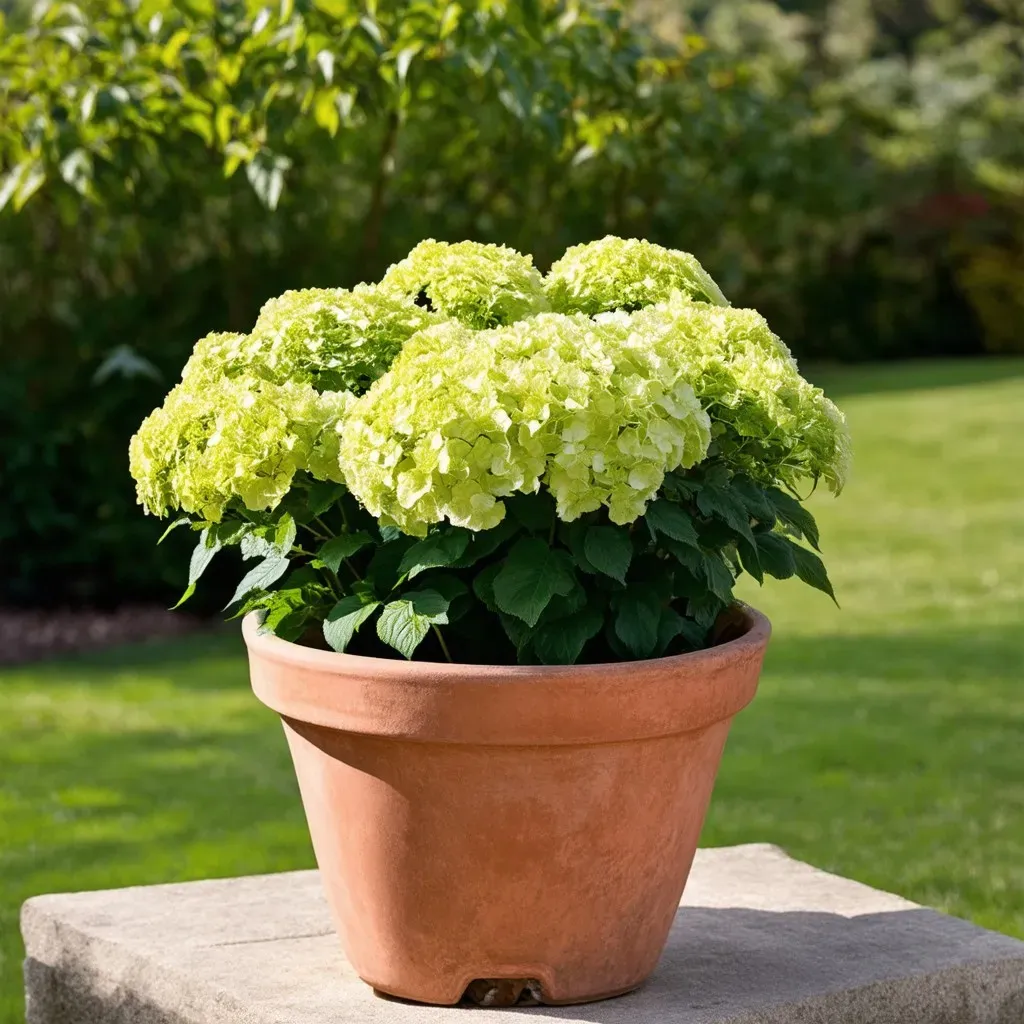Keyword: limelight hydrangea in pots
The Limelight Hydrangea (Hydrangea paniculata ‘Limelight’) is a stunning ornamental shrub known for its unique lime-green blooms, which mature to rich pink hues as fall approaches. Growing these fantastic plants in pots allows gardeners with limited space to enjoy their beauty, making them perfect for patios, balconies, or small gardens. Below is an insightful guide on how to successfully care for limelight hydrangeas in pots.
Choosing the Right Pot
When selecting a pot for your limelight hydrangea, consider the following factors:
| Factor | Description |
|---|---|
| Size | A pot that is at least 18-24 inches in diameter for adequate root space. |
| Material | Terracotta or ceramic pots that provide good airflow and drainage. |
| Drainage Holes | Must have adequate drainage holes to prevent waterlogging. |
| Weight | Heavy enough to prevent tipping over in strong winds. |
Recommended Container Sizes
| Mature Size of Plant | Container Size |
|---|---|
| 3 feet tall | 18-24 inches |
| 4 feet tall | 24-30 inches |
| 5 feet tall | 30+ inches |
For more detailed guidelines on container gardening, you may refer to Proven Winners here.
Ideal Soil Conditions
Limelight hydrangeas thrive in well-draining soil rich in organic matter. Here’s how you can prepare the ideal potting mix:
- Base Mix: Use a quality potting mix as the base.
- Organic Matter: Add compost or peat moss for fertility.
- Drainage: Incorporate perlite or vermiculite to enhance drainage.
Soil pH Levels
The ideal pH level for limelight hydrangeas is between 5.5 and 6.5. You can test the pH level and amend it using lime (to raise pH) or sulfur (to lower pH).
Sunlight Requirements
Limelight hydrangeas prefer full sun to partial shade. Ideally, they should receive at least 6 hours of sunlight daily. If you observe wilting or fading blooms, it may be an indication that they require more light.
| Sunlight Exposure | Effects |
|---|---|
| Full Sun | Vibrant blooms and robust growth. |
| Partial Shade | Reduced bloom production but healthier foliage. |
Watering Practices
Watering requirements for limelight hydrangeas can change based on the season and growth stage:
- Spring & Summer: Keep the soil consistently moist. Water deeply once a week. Insert your finger about an inch into the soil; if dry, it’s time to water.
- Fall & Winter: Reduce watering frequency as the plant goes dormant.
Signs of Overwatering
- Yellowing leaves
- Wilting despite moist soil
- Root rot
Fertilizing Limelight Hydrangeas
Limelight hydrangeas require adequate nutrients for lush growth. Fertilize them appropriately:
- Spring: A balanced, slow-release fertilizer (e.g., 10-10-10) applied according to package instructions.
- Late Summer: A high-phosphorus fertilizer to promote blooming.
Fertilizer Application Tips
- Follow the package directions carefully.
- Water thoroughly after applying fertilizer to prevent root burn.
- Avoid fertilizing late in the growing season, as it can promote new growth that won’t survive winter.
Pruning
To maintain the shape and encourage vigorous blooms, regular pruning is essential:
- Best Time: Early spring before new growth starts.
- Technique: Remove dead or weak stems, and trim back about one-third of the previous year’s growth.
Pruning Schedule
| Month | Task |
|---|---|
| March | Prune before new growth begins. |
| August | Deadhead spent blooms. |
| November | Clean up debris to minimize pests. |
Winter Care
In colder climates, you need to take additional precautions to protect your limelight hydrangeas during winter months:
- Insulation: Wrap pots in burlap or bubble wrap to insulate against freezing temperatures.
- Mulching: Add a layer of mulch on top of the soil to provide insulation.
- Positioning: When possible, move pots to a more sheltered location such as a garage or a covered porch.
Common Pests and Diseases
Limelight hydrangeas are susceptible to a few pests and diseases. Here are the most common ones:
| Pest/Disease | Symptoms | Solution |
|---|---|---|
| Aphids | Curling leaves | Spray with insecticidal soap. |
| Powdery Mildew | White, powdery coating | Increase air circulation and fungicide. |
| Root Rot | Wilting, yellowing | Ensure proper drainage and watering. |
FAQs
Q: When is the best time to plant a limelight hydrangea in pots?
A: The best time to plant limelight hydrangeas is in spring or early fall to allow roots to establish before the heat of summer or the cold of winter.
Q: How do I propagate limelight hydrangeas?
A: Propagation can be done through cuttings in late spring or summer.
Q: Can limelight hydrangeas survive winter in pots?
A: Yes, with proper precautions like insulation and protection from extreme weather, they can survive winter in pots.
Q: How often should I repot my limelight hydrangea?
A: Repot every 2-3 years or when the plant becomes root-bound.
Q: What makes limelight hydrangeas unique?
A: Their unique lime-green flowers that transition to pink and their ability to thrive in various conditions make them a favorite among gardeners.
For further details and insights on limelight hydrangeas, you can check additional resources at Garden Design here.

This comprehensive guide equips you with the necessary knowledge and skills to grow stunning limelight hydrangeas in pots, turning your outdoor space into a vibrant haven. Maximize your gardening efforts and enjoy breathtaking blooms all summer long!


